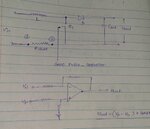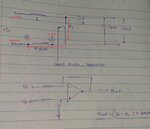Bjtpower
Full Member level 5
Hello Guys.
i am developing a Differential amplifier for my PFC Applications.
Here i am attaching the same.
Let me know the where the VP and VN will connect to the shunt and Why..??
i am getting confused while designing a differential amplifier.

Can i simply use the Inverting amplifier and proceed ahead.
Regards
Marx
i am developing a Differential amplifier for my PFC Applications.
Here i am attaching the same.
Let me know the where the VP and VN will connect to the shunt and Why..??
i am getting confused while designing a differential amplifier.

Can i simply use the Inverting amplifier and proceed ahead.
Regards
Marx


